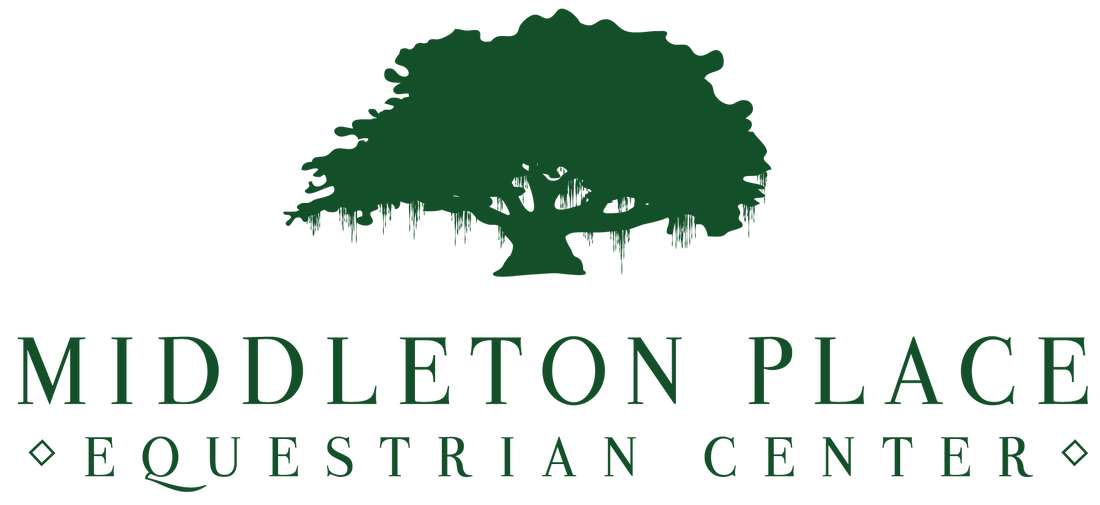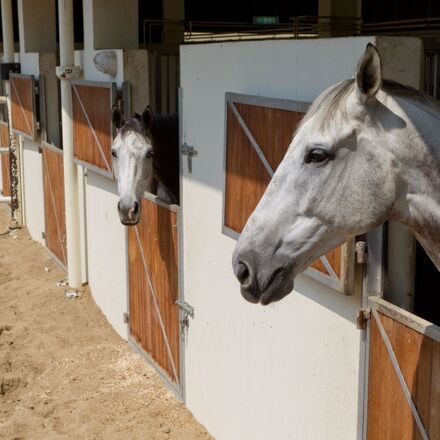 To kick off this New Year, we are going to be talking about one of our most important services and attributes; boarding your horse at Middleton Equestrian Center! Hello trail friends, a very happy new year to all of you! We hope you had a wonderful holiday season with your loved ones, and we hope you had the opportunity to take advantage of our last two blogs. We hope you took those tips and suggestions to heart to prepare your horses, stables, and barns for the cold winter weather that has finally arrived. While we might not see snow this year as our friends in North Carolina or our friends farther up north will, it has still been cold and wet here in the Lowcountry. Speaking of the Lowcountry, did you give the gift of Middleton this past holiday season? Or did you receive the gift of a trail ride with us? We can't wait to see you soon to celebrate that gift together. We are currently doing our Historic Trail Rides every day at 10 am, 12 pm, and 2 pm, with additional 4 pm rides on Friday, Saturday, and Sunday. We do prefer that you book your rides online, but you can also call us at 843-556-0449. Are you looking for the best trail rides and horseback riding in Charleston, South Carolina? You've found it! We have beautiful trails that intertwine through age-old treas, inspiring views of Middleton Place, and a guide that will accompany you to describe the history and stories we've seen and learned over the years. Middleton Place Equestrian Center is guaranteed to please all of your friends and family! We also ended 2020 on a high note, and were awarded Travelers Choice in 2020 by TripAdvisor! One of our most important services and offerings at Middleton is our horse boarding! We want to share more about it with you and talk more about it this year, so please make sure to keep up with our blog and contact us with any questions or comments. We are Charleston's premier boarding and training facility. Our boarding barns feature 46 spacious and well ventilated 12' by 12' stalls, wood shavings, individual fans, and thick stall mats. Our boarding includes feeding your horse high-quality grains and timothy/orchard hay 2-3 times per day based on each horse's individual dietary needs, owner-supplied medications and/or supplements, heightened turnout in one of our numerous large grass paddocks, stall maintenance, and seasonal blanketing. Staff members can schedule vet and farrier services as needed and perform deworming and vaccinations. For all of those new to Middleton Place Equestrian Center and to the idea of boarding your horse in South Carolina, we wanted to dedicate this blog to you and talk about some of the most important reasons and benefits of boarding your horse!
This list could go on and on trail friends, but these are the top benefits of boarding your horse and the many reasons why you should board with us at Middleton Equestrian Center. While boarding and its expenses might seem overwhelming to many new horse owners, think about all the time and money it will end up saving you overall. Also, consider the fact that you'll be able to spend more time with your horse doing exactly what you love. While you might not be able to hear or see them first thing in the morning, you also won't be getting up at the crack of dawn in the worst types of weather to care for them either. We would love to have you board with us! For more information or questions, please don't hesitate to reach out to us! Until next time, stay safe, and be well. We look forward to seeing you on our trails soon!
8 Comments
In part two of this blog series, we are going to finish talking about preparing your horses, barns, and stables for winter!
Hello trail friends, and welcome back to the blog! We hope that you've been working on going through the checklist we shared with you in part one of this blog and putting it to good use for your horses, stables, and barns! We also hope that it helped prepare you with any last-minute items you might have forgotten or might have not even thought about. For all of our first-time horse owners, we know that every changing season brings another lesson to learn, more excitement, and even more surprises. Owning a horse for the first time is very similar to having a child. It is a beautiful and magnificent creature that needs your help, dedication, and care. The longer you have your horse you find out more and more things that all the manuals and books never mentioned. They're worth it though, aren't they? While so many people might hate the cold weather, especially for those not used to it here in Charleston or the South East, it might surprise you that it can still be a very wonderful and beautiful season with your horse. There is nothing quite like seeing a horse crunch its way through a frosty field in the morning while their breath puffs up around their head. There is also nothing like watching a horse play in the snow, but that might be an even rarer event here in Charleston. You might have to make a trip up north to see that! To make this winter season as special as it can be, make sure to take this blog to heart. Make sure to follow all of the tips, suggestions, and ideas we are providing in both of these checklists to allow both you and your horse to enjoy this chilly season. If you put the work in, this will be an easy winter to navigate and work through. After this crazy year, that is something we all need, right? For all of our horse owners, don't forget that we have some of the best horse boardings right here in Charleston. We are here to help care for your horse when you need it most. If your stables are barns are ill equipt for the season, if you need to go out of town on an emergency, or just need an extra pair of hands Middleton Equestrian Center boarding is here for you. Please don't hesitate to reach out and talk with us if you have any questions or comments about our horse boarding! Also, we are still open for our historical trail rides! Dress in layers and come see the Lowcountry in a way you never have before! We are still following all COVID precautions, and what better way to adventure out and stay socially distant than on the back of a beautiful horse? If you are still looking for a wonderful holiday or end of the year gift, shop small and give big with Middleton this year! Gift cards are available to give to all of your loved ones. Introduce them to the best horseback riding in Charleston, and share some of the best horseback riding trails in Charleston with your loved ones. Make sure to visit our website to learn more, and we are always here for all of your questions! Let's get back to the blog series, shall we? We still have a little wiggle room for these last-minute additions for winter preparations since it has been a mild winter here in the Lowcountry so far, but as we all know that can change in an instant. Let's get back to work! COMFY AND COZY! As we mentioned in the first part of this blog, your horse will be burning a lot more calories during the winter months to keep them warm. While they are burning these calories to stay warm and eating more to help with this, they will still need a little extra protection from the cold. Allow their natural coats to grow out as much as possible, but keep up with their grooming habits and schedules. If you plan or working or training your horses hard during these cooler months, keep them trimmed. This will make sure that they will not get overheated during their training and work sessions. In either of these situations, make sure to have warm, waterproof, and lightweight blankets to provide extra warmth throughout the winter. Make sure to check your horse's skin often when they wear their blankets for extended periods. Blankets, while extremely helpful, can cause irritation and sores from rubbing or long term wear if not properly taken care of. Before blanket wearing weather arrives, make sure to inspect and clean each of your blankets, since it has been almost a year since they were last used or touched. Replace and repair them if needed before it gets too cold. Also, make sure you have enough blankets for all of your horses. Your younger horses might have had a growth spurt since the last time they wore their blankets, and your older horses might have lost some weight due to their age. If more blankets need to be purchased for these reasons, make sure to do so! Blankets need to fit your horses properly. Ill fitted blankets can cause irritation, be unsafe, or not provide the warmth your horses need while wearing them. The cold weather will attack one of your horse's most fragile parts of their bodies, and that is their feet! Make sure if they are going to be shod all winter that you pick the proper shoe fittings with your Ferrier. You can choose shoes that will help them navigate the snow and ice much easier and help them prevent slipping. Regardless if you are going to be choosing to keep your horses shod or not, their hooves need to be cleaned of cold wet mud and ice every day to avoid infection and irritation. Make sure that they are also dry at the end of their day when they are put back into their stables. If you are choosing to go without shoes for the winter months, make sure to do so before it gets too cold, and give them time to acclimate to this change. HEALTHY CHANGES! Make sure your horse has a proper and thorough visit with the vet before the cold weather hits and stays around for a while. It might have been a minute since their winter or spring checkup, and this is a good opportunity to catch any early issues or help prevent anything that could potentially happen to them during the cold months. This can be a great time to ask for other supplements and additives for your horses from your vet to help make the winter months healthier and happier for them. Make sure you give your horse a good balance of indoor and outdoor time throughout the winter. However, it is important to make sure that they are kept away from deep snowdrifts and extra icy paths to prevent slipping and damage done to their legs. Make sure the ventilation in your barns and stables is enough to keep fresh air flowing throughout, enough to limit dust and debris build-up, but not enough to cause drafts in the barn. Your horse's skin can become extra sensitive through the harsh cold months so if it is possible, exercise them in a dry and clean area through the winter! Also, consider your health, safety, and comfort this time of year. If you get sick and you're unable to care for your horses, what will they do without you? Make sure you have the proper winter clothing to keep you warm and safe while being comfortable enough to do your job and daily tasks of caring for your horse. Also, think about your day to day tasks and duties, and ways to make them easier. One way to help is to insulate your hand tools. You can cover them with blankets when they're not being used, store them in styrofoam, or you can even slip styrofoam pipes over the handles of all of your hand tools to create a little extra insulation. Grabbing or using very cold hand tools can be cold enough to burn, even when wearing gloves. Make sure to properly clean all of your hand tools before these winter months and before the new year. When you get into the depths of winter, you won't want to stop and make time for doing simple tasks like that, you will want to get your work done and get back inside. This is also an excellent time to service all of your power equipment on your property. Check all of the engines, oil levels, lubricants, and tires on your tractors, mowers, trucks, snowblowers, and all of your powered equipment. When stocking up on equipment and supplies for the winter, don't forget back up items to help with broken hand tools, power tools, and all of your vehicles. Again, you want all of these items to be working properly so when the bad weather comes, you won't get stuck with a broken-down tractor, truck, or snowblower on the bad weather days. Time to get to work friends! We have been busily working on all of these things ourselves; preparing our horses, barns, stables, tools, equipment, and ourselves for what's to come. Our staff has been working as hard as ever to not only prepare for this but to keep up with keeping our stables and riding equipment sanitized to help keep us all safe during the cold weather. We are thankful that the temperatures during the first few weeks of December have felt more like fall, but who knows when that will change. We also want to thank each of you for what this year has been. You have helped us continue to share our passion and love for our horses and our horse trails. You have helped us continue to show off the beautiful land of the Lowcountry, and you helped keep all of our staff and fellow guests safe and happy. We couldn't be more thankful for all of that! We aren't sure what 2021 will bring, but we hope it's truly a year to celebrate. Stay safe and healthy friends, we can't wait to see you on our trails in the new year! From all of us at Middleton Equestrian Center, we wish you a very Horsey Holiday and a very Horsey New Year! 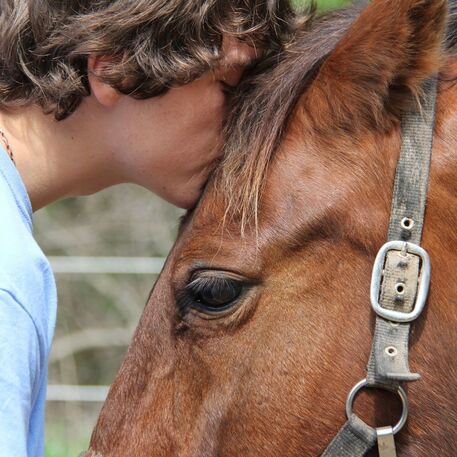 It's the season to be thankful and we have more reasons to be thankful than we can count. Through this crazy year, we wanted to make sure to pause and take a moment of reflection on why we are so thankful for our horses and our wonderful company! Hello, trail friends! Welcome back to our blog. We are taking a break from the trails, and while the horses take a rest and get a snack, we wanted to hop out of our saddles and back into our writing chair. We wanted to check in with all of our readers and supporters, too. We hope you're doing well, spending time with your horses as much as you can, and learning more about our favorite animals every day! With the holidays right around the corner, don't forget to support and love your favorite local small Charleston business. Give the gift of something unique and different this year! Give your loved ones an experience of a lifetime, and gift them with a ride on our amazing trails and the best horseback riding in Charleston! Or even gift yourself with something unique and special this year. Are you visiting our amazing city sometime soon or are you local and looking for something special to experience this holiday season? We can help with that! Make sure to check out the main page of our website and reach out to us to talk about all of your gift-giving needs. We are so excited to speak with you and to have you on our horseback riding trails soon! November is here and Thanksgiving is on our minds. Our horses are dreaming of some extra hay and maybe a few special treats or two. We are all dreaming about our turkey dinners and all the delicious fixings that come with it! Being thankful is also on our minds, and what we've been talking about a lot recently are all the reasons we are thankful for horses and our own personal list of thanksgivings that we've been able to get out of 2020. We thought we'd share our thanksgiving state of mind and pay it forward. In this week's blog, we are going to be talking about all the reasons we're thankful for horses and much more!
What are your favorite reasons that you're thankful for horses? We know the list is endless, and these are just a few of our favorite reasons that we are thankful for every day. Love and thanksgivings have no definition or an end when it comes to horses, and we are sure you understand that. We hope this is a joyful and loving Thanksgiving season for you and yours. Until next time, we look forward to seeing you on our trails soon! In this blog, we are going to be celebrating one of the most popular and oldest horse breeds in the United States, the American Quarter Horse.
Hello, trail friends! Welcome back to the blog! With the dawning of this new month, can you believe there is only a matter of weeks left until the new year? While the year is quickly ending and the weather continues to change, all of us here at Middleton Place Equestrian Center are here to offer the best trail rides and horseback riding in the Charleston area. The weather is still perfectly mild and wonderful to ride in. With beautiful trails intertwining through age-old trees, inspiring views of Middleton Place, and a guide to describe the history and stories we've seen over the years, a visit to Middleton Place Equestrian Center is guaranteed to please friends and family! We offer guided trail rides, tours of the property, and equine boarding with the best care. As of right now, due to the pandemic, please note that we are currently only offering historic trail rides! Enjoy the beautiful weather, the wonderful Lowcountry scenery all while social distancing on the back of a horse. We continue to adhere to the Governors guidelines to help keep our staff and clients safe. All saddles, bridles, and helmets are cleaned after every ride. We are very excited and looking forward to seeing all of you for your next ride very soon! While you are waiting to plan your next ride with us, we wanted to turn back to the history books. In this blog we are going to be sharing the history of one of the oldest and most popular breeds of horse right here in the United States; the American Quarter Horse! Considered one of the oldest and most beloved cultivated breeds in the United States, the Quarter Horse is an incredible example of the melting pot that the United States so proudly boasts to be. The breed itself came from a very long line of breeding some of the most influential and powerful horses from across the globe starting as early as 710. The breed itself saw its true beginning in the 1600s, during the early days of the American Settlers, and was officially solidified in the 1800s with the final addition to the breed, the Mustang. With the addition of the Mustang in its breeding, the modern American Quarter Horse was created and America had its own unique horse native to its shores. Wild Beginnings As we mentioned above, the very beginning of the American Quarter Horses' bloodline can be traced back to 710, when powerful horses were being bred between the North African Barb horses and the native Spanish stock horses. These horses were the ones that accompanied some of the very first Spanish explorers into the new world. They were also the same horses that were left behind by these very early settlers, and many of these horses swam ashore and survived multiple Spanish shipwrecks during these tumultuous years. We have talked about one lineage of these horses a few times throughout the blog, and those are the wild Corolla horses that have made the shores of North Carolina their home. These were not the only horse linage that came from these early settlement horses. Some came into the hands of the Chickasaw Indians that were native to Mississippi, Alabama, and Tennessee. Others went out west to become what we know today as the Mustang. When the second wave of colonists made it to the shores of America in the early 1600s, they brought English stock horses with them. These horses helped them settle the early colonies and survive some of the hardest and harshest years of American settlements. Once they were finally settled, decided they were going to stay, and survived those difficult and challenging years, they could finally have a pastime. One of the most popular pastimes of this generation became horse racing. Colonists were no longer fighting every moment to survive, so they could celebrate with a race or two. When this shift in society happened, the first step in breeding the Quarter Horse happened. Many settlers started trading for and riding the Spanish Barb horses that the Chickasaw Indians had cultivated, cared for, bred, and were known to ride. These horses were then bred with the English stock horses, and the first steps of the Quarter Horse were born. These horses would be bred and cared for over the next 150 years, and according to the American Quarter Horse Association, would become known as the "Celebrated American Quarter Running Horses". The name "Quarter" was given to the horses because this was the distance they were trained to run, about a quarter of a mile on flat grounds in and around colonial towns. The next wave in the development of this breed was in 1752 when a horse named Janus was brought over from England. This stunning horse was the grandson of one of the most influential horses for the foundation of the Thoroughbred horse, the Godolphin Arabian. Once Janus was bred with these blossoming colonial horses, the official prototype of the American Quarter Horse was born, according to the AQHA. These were the horses that lead Americans through the American Revolution and into the wild west and the new frontier. Frontier Horses Once the Atlantic coast had been settled, the itch to continue moving out west was born. American settlers began another great push into unknown lands and the Quarter Horse went with them. These horses, known for their short distanced speed, were now being bred for their stock and strength. Through the early years of the 1800s, this early breed of the American Quarter Horse would be bred with the last few bloodlines that would officially solidify the overall breed. Sir Archy was the first in this line, following by two influential horses named Printer and Tiger. The final piece of the puzzle to the American Quarter Horses bloodline was the powerful Mustang. These free-roaming horses, ancestors of the horses the Spanish explorers left behind, were what made the Plains Indians the strongest mounted warriors that anyone had ever seen, according to AQHA. These new powerhouse horses took settlers out west, help clear and plant this new land, and became the favorites of cowboys and farmers alike. Their strong, stocky, and muscled bodies were perfect for the harsh life and beginnings of the great west, and their gentle dispositions were perfect for caring and interacting with cattle. While farms started to spread across the frontier, so did vast cow farms, all thanks to the Quarter Horse. They were once used as sheer entertainment, and how now become the force of breaking into the frontier. Modern Marvels Today, these beautiful creatures are still bred to have the same features and personalities that broke open the wild west, they just aren't used to forge new lands and farm as they once did. Thanks to the foundation of the American Quarter Horse Association in 1940, the breed became official. New steps were now being taken to preserve the breed. Breeding the Quarter Horse follows incredibly strict guidelines today, and it is dedicated to perfecting the bloodline. The foal has to come from a registered mare and sire to be recognized by the association. They are only allowed to have very limited white markings on their faces and below their knees. There are also only 13 accepted colors recognized by the AQHA ranging from reddish-brown to a stunning grey. They are still known for their muscling, their gentle natures, temperament around cows, versatility, and sprinting speed. While they can still be used for farming, modern technology has moved the Quarter Horses focus and training towards excelling in almost every racing and skilled event that is popular today. With its versatility, the Quarter Horse has become known as one of the most popular breeds, with riding for enjoying being their owner's favorite form of recreation. What a stunning breed and powerful history! They are such influential horses that it is almost impossible not to come across a Quarter Horse at least once in your lifetime. You might even meet one or two at our stables! We hope you enjoyed the history of the Quarter Horse, and we hope this blog has inspired you to book your next visit with us! Until next time, stay safe and stay hopeful everyone! Curious about what you might find when riding on our trials or on trails of your own? Here are some important accessories you need to know about!
Happy June, everyone! Let's continue to get back in the saddle one day at a time. When joining us for your next trail ride, there might be a few needed accessories that you might not know what they are or what they do. Don't worry! We are here to help guide you. Also, everything you need for your next visit with us will be provided. We are taking very serious steps to keep our guests and employees very safe. Everything you touch and come in contact with will be very safe and clean. But as you prepare to come to visit us, we wanted to share some information about some important trail riding accessories. This information is also great for those who want to explore trails out in the wild or who might want to invest in their trail riding equipment. Don't forget, our historic trail rides are open and available to the public. You don't want to miss this beautiful and unique experience this summer! Each of the items we will be talking about today makes riding and any experience on or with a horse much more prepared, easier, and comfortable for both parties involved. They help keep the quality of the ride enjoyable and can come in handy to keep you safe and protected in any situation.
Have you seen or used some of these accessories before? Or are they all new to you? We are excited to help continue and nurture any education when it comes to our beautiful horses and everything it takes to ride them safely and properly. The trails are calling you, so what are you waiting for? Until you join us for your next ride, please continue to stay safe! We are Charleston's premier horseback riding trail, dedicated to keeping you safe while exploring the beauty of the Lowcountry. 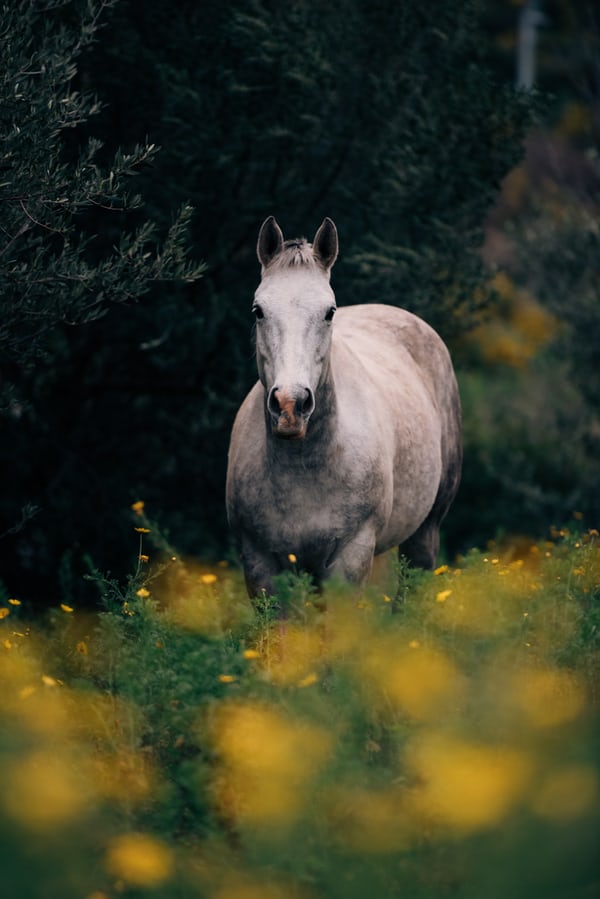 These beautiful creatures are full of surprises. Their unique personalities, how they interact with one another, and the things we discover continue to surprise us. So much so, there are hundreds of interesting and bizarre facts about horses out there, and many you might not know! We are getting one step closer to some sense of normalcy every day. As we mentioned in our last blog, we've been taking extra care of our horses, barns, equipment, and stables to make your next ride with us very safe. Make sure you're paying close attention to our website or give us a call for all of our latest information. We are currently open for our historic trail rides, which are not to be missed! Enjoy this beautiful weather and the wonderful Lowcountry scenery, all while social distancing on the back of a stunning horse. We are adhering to the Governor's guidelines to help keep our staff and clients safe. Please reach out to us regarding any specific questions or services, and we hope to see you real soon. It's very easy to book your next ride with us on our website or to send us a message. We are here for you and continue to offer the best trail rides in Charleston! In our last few blogs we've scaled the spectrum of topics. From ways to ride your horses, staying sanitary, to myths and legends, we've offered a slew of new things to learn about. Education is something we deeply appreciate and cherish. We love watching new riders of all ages hop on a horse for the very first time, and continue coming back as their love and appreciation grows for these amazing creatures. As the virtual school year has a few more weeks left, we hope that parents will bring their children to our trails for a field trip or stumble upon our blog. In that vein and the spirit of continued education, we wanted to share some interesting and bizarre facts that you may or may not know about horses! We would love to hear from you after you read this blog. Comment what facts you found interesting and what you learned. Don't hesitate to share and post this for all of your friends and family to enjoy, too! INTERESTING FACTS
BIZARRE FACTS
These are just some of the interesting and bizarre facts about horses that are out there. These gentle creatures are very complex, and in the 5000 years they have been domesticated, we continue to learn more and more about them. What facts did you learn today? Did anything surprise you? We would love to hear from you! Until then, please continue to stay safe! We are Charleston's premier horseback riding trail, dedicated to keeping you safe while exploring the beauty of the Lowcountry. 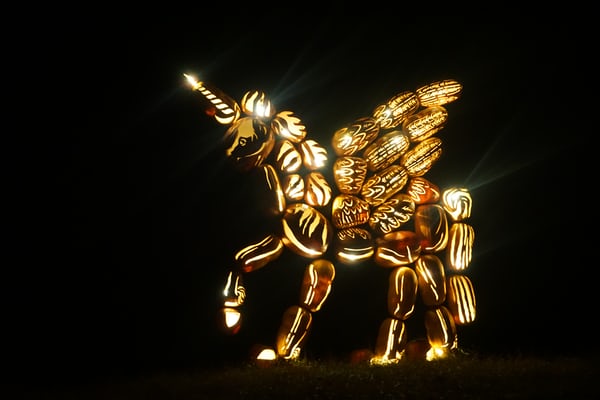 We had so much fun diving into the world of the horses we've loved in the pages of our favorite children's books, we wanted to dive in a little deeper! We are going from the pages of our favorite books to the legends of our favorite mythical horses that have been around for centuries! Hello, Lowcountry! We hope you've been enjoying this beautiful weather as much as we have! Before you know it, you'll be able to enjoy the best horseback riding trails in Charleston with us! We have been getting ready for you, and our horses can't wait to see you again. Until then, we hope you and your family continue to stay healthy and safe. Did you enjoy our last blog revisiting some of your favorite fictional horses you grew up with? We loved researching and revisiting those stories and took so much comfort from them. We loved it so much that we thought we would take this blog one step further and visit some of the most famous and mythical horses of all time. When we dove into this magical world, it proved to be very surprising. It might just put your knowledge to the test. We are excited to see how much you know and remember about these fascinating creatures. PEGASUS We couldn't begin or write a blog about mythical horses without starting or including Pegasus! This beautiful winged creature was born from the pages of Greek Mythology and was the child of Medusa and Poseidon. Pegasus has been seen in literature, art, and currency since as early as the 7th Century BCE in Corinthian culture. As the Greek myth goes, Poseidon fathered Pegasus with Medusa, and Pegasus was born when the hero Perseus slew Medusa by cutting off her head. The blood from her neck fell into the ocean, and out of the white ocean foam came Pegasus. The immortal horse received its signature bright white color from being born of the beautiful white sea foam. Poseidon gifted the horse to his son Bellerophon. Together the pair fought and won many famous mythical battles including Bellerophon's fight against the Chimaera. The two were quite a pair until similarly to Icarus, Bellerophon flew too close to the Mountain of the Gods. Pegasus threw him off his back and down to Earth. Grecian legend goes on to say that Pegasus was then gifted to Eos, and helped him pull Dawn across the sky. Others believe this is when Pegasus officially became a constellation and the servant of Zeus. He provided Zeus with all the thunder and lighting he needed. Thanks to Roman art, the history of Pegasus was immortalized which eventually lead to him becoming a symbol of immortality. To this day Pegasus appears in art, literature, cartoons, famous children's books, and movies. What has been your favorite version of Pegasus? HIPPOGRIFF This incredible mythical creature has a very interesting beginning. With the body and hindquarters of a horse and the front half of a griffin, the Hippogriff was created. Many credit this creation to Ancient Greek lore, some to Virgil, and others to the 16th-century poet Ludovico Ariosto. According to the Encyclopedia Britannica, this creature was created and written about by Ariosto, while the other's just mentioned his possibility. The Hippogriff appeared in Ariosto's poem entitled "Orlando Furioso" which was indeed credited and based on Virgil's Eclogue, according to Marianne Shapiro's "The Poetics of Ariosto". The famous poem made its the first appearance in 1516 and had multiple revisions between that date and 1532, very close to Ariosto's death. The creature is supposed to signify something impossible because it was known throughout lore that griffins and horses were mortal enemies. The Hippogriff was and still is a legendary creature that lives within Greek Folklore, and continued to grow in fame thanks to Ariosto. The creature is said to be able to fly around the world and even to the moon. It has also been very frequently depicted on the coat of arms after it's appearance in the 16th-century poem. He is also said to be a symbol of the Greek god Apollo. Today, the Hippogriff has made a very popular comeback thank's to writer J.K Rowling and her Harry Potter book series. Rowling created and introduced the character of Buckbeak the Hippogriff to the Harry Potter world and its fans. He continues to be one of the most popular characters in all of the seven books. UNICORNS Before we closed out this blog we had to touch on one of the most famous mythical horses of all time, the unicorn. This creature is depicted as a beautiful horse with a single horn coming out of its forehead. This legendary creature has been depicted in modern cartoons, books, and movies for a very long time. But, its mythical legend and how long it has been included in art, literature, and storytelling dates back thousands of years. It has been mentioned across multiple races and religions, appearing in Ancient Greek mythology, The Bible, European Folklore, Chinese mythology, and it's timeline spans from antiquity and beyond. Through each of these tellings, the Unicorn is depicted in multiple, albeit very similar, forms of appearance with multiple different and very interesting and sometimes disturbing stories of parentage. Although considered a relic of mythology, the creature was very real for many cultures and civilizations for many years. The horn, drinking from the horn, or drinking its blood has been cited to save the drinker from poison, sickness, and even death. To this day, thanks to cartoons, books, and the popularity of mythical lore, the unicorn still holds a very popular place. To many, it stands for something rare and represents fantasy. How did these facts test your knowledge of ancient lore and Greek mythology? Did we stump you or did you already know these facts and details? There were a few things we learned ourselves, and we now have a huge urge to go back and visit some of our favorite Harry Potter books and favorite childhood cartoons where these beautiful creatures live. Please continue to stay safe everyone. The longer you stay safe, the sooner we can get back to the trails! Remember, once we do get back to normal we offer the best horseback riding in Charleston, the best horse trail riding in Charleston, and more. During this break, take the time to visit all of the pages of our website, and enjoy learning more about Middleton trail rides! We will see you soon! 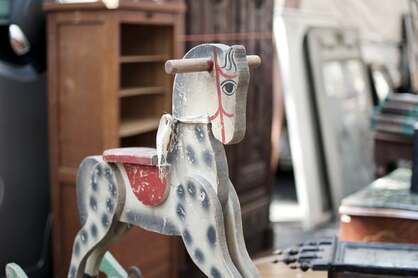 The media and the news aren't full of the best topics right now. We are right there with you when we say it's hard to read them every day. So we wanted to change things up a bit, and share some of our all-time favorite stories. During these unknown times, it has been very easy to get sucked into watching the news nonstop or scrolling through our phones for hours on end. A positive message and distraction is something that we all need right now. Which is why we picked this particular topic for our first blog of the month. To break up the multitudes of articles and blogs you've been reading about the current situation, we wanted to share one about some of the world's most famous literary horses, what their stories are, and what their history is. Sometimes, you can't always find yourself in the comfort of a saddle riding through the best horseback riding trails in Charleston. Sometimes you have to turn the pages of your favorite books, and that's alright. They will be here to keep you happy and comfortable until we can see you again! BLACK BEAUTY By Anna Sewell (1877) There are many of us out there who believed that Black Beauty was a real horse and based on a true story. Some you might still believe that today. With his amazing popularity and renown, it's hard to imagine a world without Beauty, even if he just lives in the pages of our most beloved children's book. Remember too, Beauty is the one telling the story. As much as we LOVE the idea of a real talking horse, they are still just in our storybooks. The book is credited as one of the first major animal stories in children's literature, and we all know why. Beauty himself narrates the story, as we said before, and the book is the story of his heroic life. It is the story of a well-born and well bread horse living in a world before cars and most modern technology that we know today. The amazingly brave, strong, smart and obedient Beauty is sold to a very cruel master, after his happy early years. Under the hands of this cruel master, he collapses from ill-treatment and overwork. Thankfully, Beauty recovers under a new master who loves him dearly and lives an extraordinary life after this rescue. Not only is this a beautiful story, but it was also one of the first to teach the importance of kindness towards animals and about animal welfare. Black Beauty is sited as the most famous horse story ever written and is it is still very popular to this day. It is one of the best selling books of all time, having sold over fifty million copies. There have been multiple TV shows and mini-series, movies, theatrical adaptations, and a musical recording adaptation made by Walt Disney about or inspired by Black Beauty. MISTY OF CHINCOTEAGUE By Marguerite Henry (1947) This four-part book series was written between 1947 and 1992, inspiring many others to continue the Misty legacy in their own books. Even before many of us read Black Beauty, Misty and the many books written by Marguerite Henry were the first stories about horses we read and fell in love with. The story begins in Virginia in the mid-1900s. The island the story takes place on has become home to several wild horses who came from a Spanish ship that sunk in the 1300s. The horses made their home on the beaches and became wild after being left alone for generations, and have become a staple of this story's little town. Paul and Maureen, our two main characters, want to be apart of rounding up these wild horses to sell or train as the rest of the adults do in their town, but since they are so young they have been allowed to. The famous wild horse, Phantom, has never been caught by anyone in the town and happens to be the prize Paul and Maureen have their eyes set on. Against all odds and through many trials and tribulations, they round up Phantom and her foal, Misty. Paul and Maureen finally gain Phantom and Misty's trust and allow them to be ridden. Paul trains Phantom to race and wins to the pride of their town and their grandparents. Guilty with the knowledge that Phantom wants to run free again, Paul and Maureen let her go, while Misty wishes to stay behind. This beautiful story is a coming of age book in many ways and continues to hold onto this beautiful theme through the full book series. Have you read them all? THE BLACK STALLION By Walter Farley (1979) This series of books was written for the adventurer and daydreamer alike playing make-believe while we were growing up, or for those still daydreaming today. The first book that started the adventure was about a young boy named Alec. While sailing around West Africa, Alec befriends a beautiful stallion on board. When the ship sinks, Alec saves the horse by releasing him from his stall and they swim to a nearby island. When they are finally rescued after forming a very tight bond, Alec insists that his horse be reduced too. They go to America, where after training, the stallion is now called "The Black". The horses are entered into his very first prominent race and wins, breaking a world record while doing so. This incredible book proved that nothing can get in the way of your dreams. The following books in the series are about his three children, his life beyond that of the first book, and introduces many other incredible horses along the way. Even though Black Beauty was sited as the most famous horse story ever written, the New York Times has described The Black Stallion as "the most famous fictional horse of the century." There have been three movie adaptations and one TV adaptation of the book. The first two books in the series, along with the last were all adapted into the three movie adaptations. In total, there were twenty books in the series written over more than 40 years. Some of the books were written by Walter Farley's son, Steven has also written his own Black Stallion novels, which are not included in the original 20 book series. Which one was your favorite? What is your favorite book or story about a literary horse? Is that where you came to find your love of horses for the very first time? Are the pages of these stories where you went you couldn't ride or visit your horse? Are these books ones you've shared with your family or plan to in the years to come? We hope you take comfort in their pages now, and they are getting you excited to ride with us again! When this is all over, we can't wait to take a trail ride with you on the best horseback riding trails in Charleston and in South Carolina! 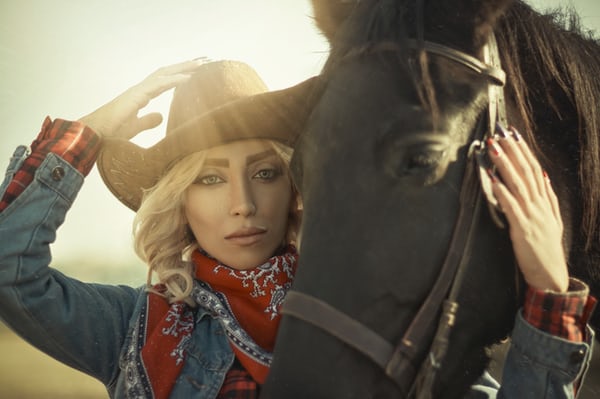 Many of us dream of being in the limelight one way or another. Who could have ever thought that horses share that same interest? Or that a horse could help bring their owners into the limelight with their incredible talents and beauty? Here is a little story behind some of the most famous horses and their equally famous owners. Famous people come to the Lowcountry every day. You can walk down King Street in the summertime and spot a star or two, or while you're sitting at your favorite restaurant in town someone famous could be sitting at the table next to yours. With our beautiful beaches, excellent food, amazing horse riding facilities, and perfect weather, Charleston offers the best of the best. More films and TV shows are being filmed in Charleston every year too, and stars of the silver and smaller screens are becoming a permanent fixture in our beautiful city. Beyond the stars that call Charleston their home or their favorite vacation spot, can you name any horse who has become famous on the big screen? Can you name a famous fixture in history who was known to be an amazing horseman or woman? You might be surprised to know there are many in both categories. Many modern celebrities love their horses or fall madly in love with them while working with them on set, but this list offers a little more than just that! Roy Rogers Many think of this handsome horseman as a TV and movie star. Which is 100% correct! Trigger, a stunning Palimino, was hist faithful horse and companion. To this day Trigger has become one of the most famous horses in film history, and Mr. Rogers was not too far behind him. Trigger stood at 15.3 hands tall, and was born on July 4th, 1943 and died on July 3rd, 1965. A child growing up during Trigger's lifetime knew who he was and that he was a cowboy's best friend. This beautiful horse used his fame to inspire so many, and never let stairs or elevators get in the way of a hospital or shelter visit. When he was born, his name was Golden Cloud. He was sold to the Hudkins Stables of Hollywood when he was three years old. This particular stable supplied horses exclusively for the TV and film industry. He appeared in his first film, "The Adventures of Robin Hood", and was ridden by the incredible Olivia de Haviland in 1938. Around the same time, a very handsome young cowboy who loved the movies changed his name from Leonard Slye to Roy Rogers. He chose the name so he could sound a little bit more like the cowboy he was. A real cowboy, now staring in his film, needed the perfect horse. That perfect horse was Golden Cloud. Rogers knew he was his match from the very first moment he rode him. Trigger earned his new name when a fellow actor of Rogers' noticed how quick he was, similar to Rogers' quick draw with a gun. So, he suggested the name, and it stuck. When their first movie together, "Under The Western Stars" made its premiere, one of the most important duos of all time was born. Knowing Trigger's popularity would continue to soar, Rogers couldn't bear the thought of someone else riding him or taking him away. So, he jumped into action and bought Trigger for his own for $2500, a mighty big sum at the time. Rogers paid in installments, and it was one of the best decisions he ever made. The duo soared to success, making one another more famous than they could have imagined. Trigger appeared in all 88 movies Rogers was in and in all 100 episodes of the Roy Rogers show and was a part of Roger's life until he died. He couldn't bear to see him buried, so he was taxidermied and was on display at multiple museums until the early 2000's when the last museum he appeared at shut down. Queen Elizabeth and Burmese The Royal family has been known for their deep love and appreciation of horses for generations. Queen Elizabeth has been one of the most prominent members of the Royal Family who has always loved and dedicated a large part of her life and time to her horses. Thanks to historical TV shows like "The Crown" we have gotten a front-row view of her love of horses and the passion she's had them from the time she was a very little girl. She had her very first pony at the age of three and is still known to ride today at the age of 92. To this day the royal family breeds some of the best horses in the UK, their horses winning almost every race in most recent history. From a very young age, Queen Elizabeth has owned and loved many spectacular horses. The standout of these beauties being Burmese, a stunning black mare that was gifted to her by the Royal Canadian Mounted Police in 1969. For 18 years, the Queen rode Burmese in the Troping The Color Parade, a parade given in special honor of her birthday. She rode Burmese next to President Ronald Reagan, and she was also riding Burmese when in 1981, 6 blank shots were fired at her during her birthday parade. The stunning horse stood strong for her beloved Queen, who recovered almost instantly and continued riding with her head held high. Burmese was retired in 1986 and put out to pasture at Windsor Castle until her death in 1990. She is buried on the grounds of the castle, which is an extreme honor and a very unique one. The Queen had a statue commissioned in honor of Burmese's life, and today it stands in front of the Saskatchewan Legislature Building in Regina, Canada. This was the providence that Burmese was born. In the UK's history, the Queen has been ranked as one of the top horse breeders. She has also been ranked as one of the highest-profile horseback riding devotees in the world. Burmese was born in 1962 and was trained by corporal Fred Rasmussen. The Queen rode her daily when she was staying at her country house, not just during her birthday parades. She was a stunning sight to see when she was being ridden and is still remembered as one of the most beautiful horses in royal history. Mr. Ed We can't talk about famous horses without mentioning Mr. Ed, of course! This popular children's show stole the hearts of the nation and Mr. Ed was at the center of that love. The TV show focused around the friendship between Wilbur Post (played by Alan Young) and Mr. Ed, his talking horse (voiced by Alan Lane). Mr. Ed was named Bamboo Harvester off the big screen and was a stunning Palomino. The majority of the show is about Mr. Ed offering his best friend, Wilbert, advice on life. More often than not, he got Wilbur in trouble because Mr. Ed would only talk to Wilbur and no one else. The show was popular around the world, and long after it went off the air in 1966. The show aired from 1961 to 1966, and believe it or not, no one wanted to pick up the show at first. It took a year of private backing before it was picked up, but once it was the show was a smashing hit. Bamboo Harvester was born in 1949 and was trained by Les Hilton. Hilton was able to teach him to move his lips every time his hoof was touched. Peanut butter could also be used to get his lips moving so it looked like he was talking. Bamboo Harvester died in 1971 after an incredible life and career. No one knows exactly how he died, many stories are floating around Hollywood about it. The most probable story of them all is that he died from heart failure. A little known fact about the show, one of the most famous film cowboys of all time, Clint Eastwood, was on the show too! There you have it! Some of the most popular horses and their celebrity counterparts of all time. Historically hundreds of horses could be added to this list. Horses have been used from the dawning of time to help conquer, protect, and build civilizations. They have journeyed from building the world to creating a world on the big screen. Who is your favorite TV or Film horse of all time? You never know, the next time you come take a ride at Middleton Equestrian Center, you might be riding the next big star Charleston will ever see! Horse racing has been one of the most popular equestrian sports throughout all of history. It has echoed throughout centuries, cultures, and the world. There is a reason horse racing has become and remained so popular: it celebrates the strength, power, and beauty of these amazing animals and excites the rider and those who love the sport. But who knew that there were so many different types of racing?
We are getting so excited about these warmer temperatures that keep popping through the rainy cool days here in the Lowcountry. There isn't anything wrong with a brisk trail ride, and there is something to be said about a ride in a drizzle. But these sunnier and warmer days are getting us so excited for our southeastern springs because that means more trail rides and perfect days for trail rides! While we've been waiting for these perfect days, we have been doing our research and continuing our little educational tour on the history and types of equestrian sport. Our most recent tour lead us back to horse racing, and we were just floored by how many different types of racing we found and how much they differ from one another. While you wait for your next ride on our beautiful horseback riding trails, we hope you enjoy this little walk through equestrian sport history! We have learned through our research of horseback riding that the number of equestrian sports and the many ways you can play them is immense. It's such an exciting sport, and it continues to grow and be nurtured all over the world. In our past few blogs, we've shared some of the more unique equestrian sports and games, and for this blog, we wanted to take more of a classic approach.
There is so much to horse racing and equestrian sport that we could talk about it for blogs and blogs. We have so enjoyed sharing this information with you, and hope it sparks joy in your life. We hope it has inspired you to come to join us for a trail ride on the best horseback riding trails in South Carolina. Come visit us soon, we have a saddle with your name on it! |
AuthorMiddleton Place Team Archives
January 2021
Categories
All
|
|
4280 Ashley River Road, Charleston, SC 29414
[email protected] 843-735-0709 Please also visit: Middleton Place | The Inn at Middleton Place |
Site powered by MadeSimply
|
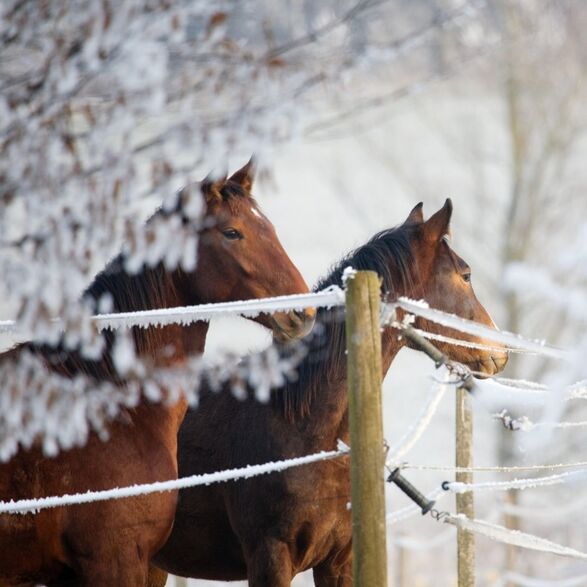
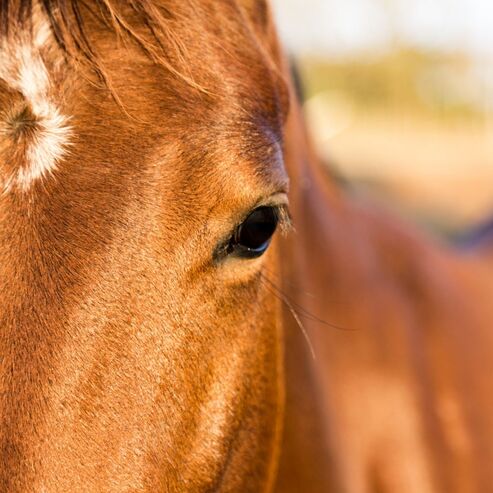
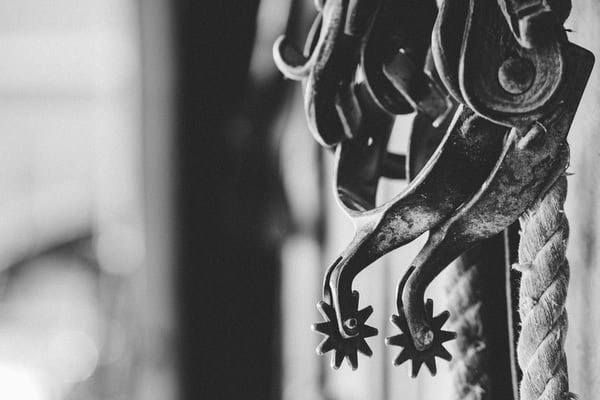
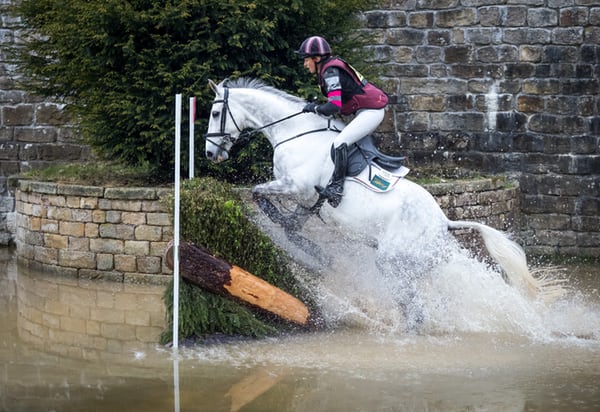
 RSS Feed
RSS Feed

